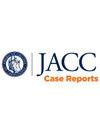Culture-Confirmed Histoplasma Endocarditis on Bioprosthetic Mitral Valve Managed Successfully Without Surgery
Q4 Medicine
引用次数: 0
Abstract
Background
Prosthetic valve endocarditis due to Histoplasma capsulatum is exceedingly rare and difficult to diagnose.
Case Summary
A 79-year-old man with a bioprosthetic mitral valve presented with subacute cognitive decline, pancytopenia, and hypercalcemia. He was afebrile and hemodynamically stable. Echocardiography showed vegetations on the valve. Initially, blood cultures were negative. Urine Histoplasma antigen and serum beta-D-glucan were positive, and fungal blood cultures later grew H capsulatum after 4 weeks of incubation. He was managed with liposomal amphotericin B followed by isavuconazole due to itraconazole contraindications. He gradually recovered without surgical intervention.
Discussion
This case illustrates the diagnostic and treatment complexities of Histoplasma endocarditis.
Take-Home Messages
In endemic regions, consider Histoplasma in culture-negative prosthetic valve endocarditis. Early diagnosis may rely on beta-D-glucan and H capsulatum urine antigen before cultures become positive. Isavuconazole is a viable alternative when itraconazole is not an option. Selected patients can be managed successfully without surgery.
培养证实的组织浆体心内膜炎在生物假体二尖瓣上成功治疗,无需手术
研究背景:由荚膜组织浆体引起的人工瓣膜心内膜炎极为罕见且难以诊断。一例79岁男性,植入生物二尖瓣,表现为亚急性认知能力下降、全血细胞减少和高钙血症。他不发烧,血流动力学稳定。超声心动图显示瓣膜上有植被。最初,血液培养呈阴性。尿组织浆抗原和血清β - d -葡聚糖呈阳性,真菌血培养4周后生长出荚膜H。由于伊曲康唑禁忌症,患者先用两性霉素B脂质体治疗,再用依舒康唑治疗。他在没有手术干预的情况下逐渐恢复。本病例说明了组织浆体心内膜炎的诊断和治疗的复杂性。在流行地区,在培养阴性的人工瓣膜心内膜炎中考虑组织浆。早期诊断可能依赖于β - d -葡聚糖和荚膜囊H尿抗原前培养成为阳性。当伊曲康唑无法选择时,依沙乌康唑是一种可行的替代方案。选定的患者无需手术即可成功治疗。
本文章由计算机程序翻译,如有差异,请以英文原文为准。
求助全文
约1分钟内获得全文
求助全文
来源期刊

JACC. Case reports
Medicine-Cardiology and Cardiovascular Medicine
CiteScore
1.30
自引率
0.00%
发文量
404
审稿时长
17 weeks
 求助内容:
求助内容: 应助结果提醒方式:
应助结果提醒方式:


